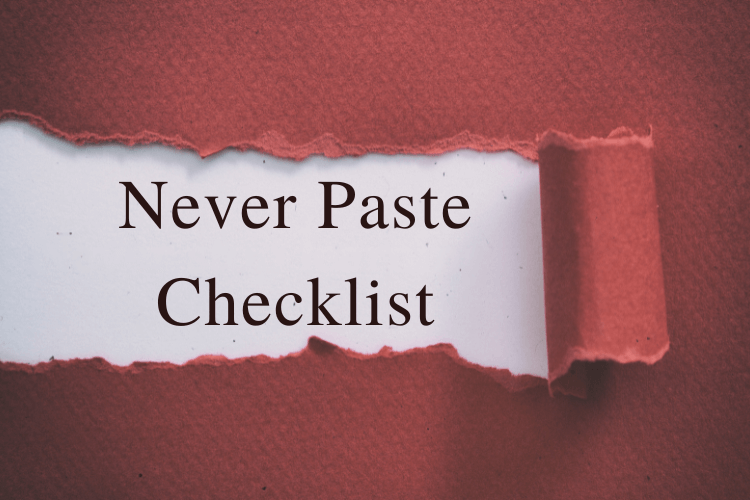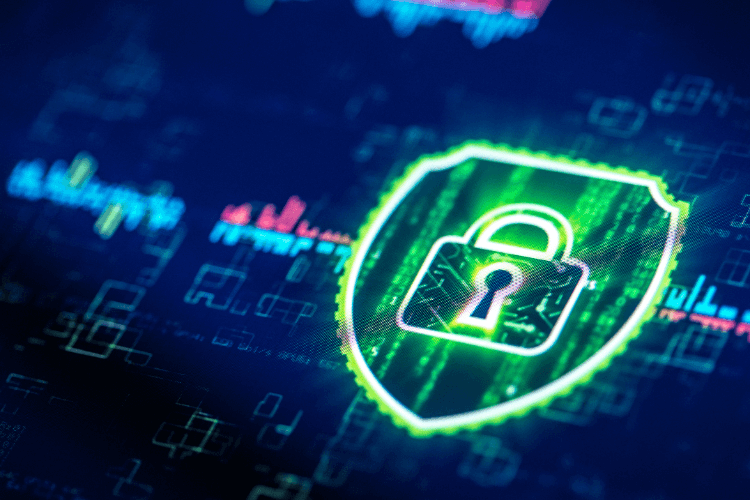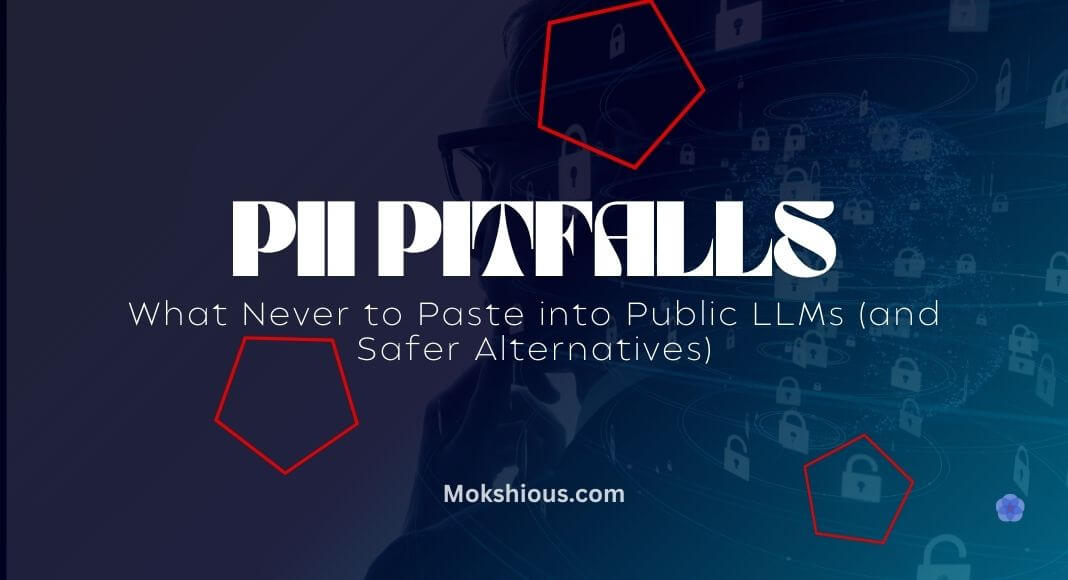When you copy and paste text into ChatGPT, it can feel private, almost like jotting down notes in your own journal. The problem is that public large language models don’t work that way. Most can log, store, and in some cases even use your prompts for model training unless you’ve explicitly enabled a zero-retention mode or upgraded to an enterprise version. In practice, pasting text into ChatGPT is closer to posting on a public forum than whispering to a locked notebook, unless you’ve set up enterprise-level AI data controls.
ChatGPT Data Risks: Why Private Information Can Be Leaked Through Copying and Pasting

It seems easy to use ChatGPT for chat at first glance. You paste text, and the AI reacts, and you assume that the conversation stays between you and the bot. However, the reality is more complex. The second you drop confidential information into ChatGPT, Claude, Copilot, or any other LLM-powered app, you’ve essentially shifted sensitive data into a system you don’t fully control.
Data retention and training risks
Public LLM platforms often log what’s typed or pasted. Depending on the provider, that data could be kept temporarily or indefinitely. If you’re not using enterprise controls or zero-retention mode, those prompts may also be fed back into training pipelines. That means customer PII, PCI data, or even intellectual property can end up in places you never intended. It’s like pasting from Word into a public web app: once it’s uploaded, the trail is no longer yours to manage.
Confidential information exposure in outputs
Deleting a chat doesn’t always erase the traces. Cached prompts or internal logs might persist. Worse, if the system isn’t properly isolated, models can echo back fragments of past conversations. A simple instruction like “see my last prompt” could unexpectedly reveal confidential information or proprietary data you thought was gone.
Security blind spots in cloud services
Behind the scenes, these tools run on infrastructures owned by Google, Microsoft, and OpenAI. Each has its own approach to cloud security. Microsoft Copilot, for example, is built inside the Microsoft 365 boundary with compliance hooks, while the consumer ChatGPT app doesn’t automatically align with SOC 2 or ISO 27001 standards. Unless your IT or Legal team has verified the settings, your pasted text may not meet the security bar your organization expects.
Intellectual property risks
Source code, contracts, or internal software development notes are especially sensitive. Once pasted into a GPT app, you lose control over storage and potential reproduction. Imagine discovering later that a competitor’s prompt spits out code that looks eerily familiar to yours. Proving ownership becomes a legal nightmare if your intellectual property has been exposed through an AI’s memory.
Human access and admin visibility
People often assume only the AI processes what’s pasted. That’s not the full story. Depending on the provider and plan, administrators, auditors, or even staff at the AI vendor may be able to review chat logs. Confidential information in ChatGPT isn’t just in a machine’s memory; under certain conditions, humans may access it too.
The compliance domino effect
Once confidential information leaves your internal systems, you could trigger multiple compliance issues at once. GDPR, HIPAA PHI, PCI DSS, the NIST privacy framework, SOC 2, and ISO 27001 all of these frameworks expect strict data handling. A single careless paste can set off reporting requirements, penalties, or a costly investigation.
The “Never Paste” Checklist (Copy-and-Paste Safe List for Teams)

Direct identifiers (PII examples)
- Full name + DOB
- Home address, phone, personal email
- SSN, Aadhaar, passport, or driver’s license
Financial data (PCI data)
- Credit card numbers, CVV, IBAN
- Online banking usernames or passwords
- Statements connected to identifiable customers
Health data (PHI vs PII)
- Patient IDs, diagnoses, treatment notes
- Insurance member IDs, lab results
Credentials and secrets
- Passwords, API keys, access tokens
- SSH keys, private repo source code, VPN configs
Customer and employee records
- Payroll information, performance reviews, resumes, and HR files
- Customer identification on support tickets
Business-sensitive docs
- NDAs, pricing sheets, contracts
- Product roadmaps, M&A decks, vulnerability reports
Location data and minors
- Exact GPS coordinates, school, or child details
- Images of government-issued IDs
Export-controlled or proprietary information
- ITAR/EAR documents
- Litigation files
- Proprietary information that falls under SOC 2 or ISO 27001 compliance
AI Security 101: Why It Matters When You Paste Into ChatGPT

Google, Microsoft, and Cloud Retention Policies You Need to See
- HIPAA PHI fines can reach millions if healthcare data leaks.
- PCI DSS violations around card data can halt your payment processing.
- GDPR anonymisation rules demand proper anonymization vs pseudonymization. Fines can climb as high as €20M or 4% of global turnover.
- SOC 2 and ISO 27001 audits can collapse if auditors find mishandled confidential information.
GPT App Risks: Top 2 Data Leakage Paths You Should Know
- Logging and retention: without zero-retention mode, prompts can linger in system logs.
- Training and injection risks: consumer-facing LLMs can use your copy-and-paste content to “improve” models, and prompt injection can push that information into future outputs.
OWASP LLM Top 10 explicitly calls out “data leakage” and “sensitive data in prompts” as major security problems.
Safer Alternatives for Confidential Information and Security

Data Loss Prevention vs Redaction: What Works Best for PII
- Use automatic PII redaction tools like Google Cloud DLP, AWS Comprehend PII, or Azure PII detection.
- Replace identifiers with placeholders like [EMAIL] or [PHONE].
- Maintain a plain text data dictionary so redaction stays consistent.
Enterprise AI vs Public ChatGPT: Which Model Keeps Data Safer
- ChatGPT Enterprise privacy disables training and enables audit logging.
- Microsoft Copilot security uses built-in M365 DLP and retention controls.
- Always confirm enterprise AI data controls before pasting confidential information.
Secrets go into vaults, not prompts.
- Store secrets in vaults like 1Password or HashiCorp Vault.
- Turn on GitHub secret scanning to detect API keys before they leak.
Minimize and anonymize
- Only share the fields necessary for the task.
- Use tokenization or anonymization over pseudonymization when possible.
- Follow the NIST privacy framework to stay compliant.
Consider self-hosted or on-prem LLMs
- On-prem deployments provide complete control over access and retention.
- Pair them with RAG plus access control to limit exposure.
- Best option for proprietary information in regulated industries.
Team Policy: Top 10 ChatGPT Rules for Confidential Data Security

- Redact or don’t paste confidential information.
- Never paste credentials or secrets.
- Use only enterprise AI apps with zero-retention mode.
- Enable DLP scanning before sending data to AI.
- Remove identifiers from screenshots or images of the text.
- Keep prompts minimal; no unnecessary fields.
- Stick to a shared placeholder dictionary.
- Route PHI and PCI only through approved, compliant channels.
- Log context without including raw PII.
- Recheck your process with Legal and IT every quarter, using OWASP LLM Top 10 Application as a benchmark.
Conclusion: Protect Intellectual Property and Confidential Information in ChatGPT vs Safer Alternatives
Using ChatGPT and other AI tools can feel as natural as typing into a search bar, but the stakes are much higher when confidential information is involved. The simple act of copy and paste can move sensitive data, from PII examples like names and addresses, to PCI data like card numbers, or even proprietary software development documents, into systems you don’t fully control.
Once that happens, you may face retention risks, intellectual property exposure, or compliance issues tied to HIPAA PHI, GDPR anonymisation rules, SOC 2, and ISO 27001 audits.
